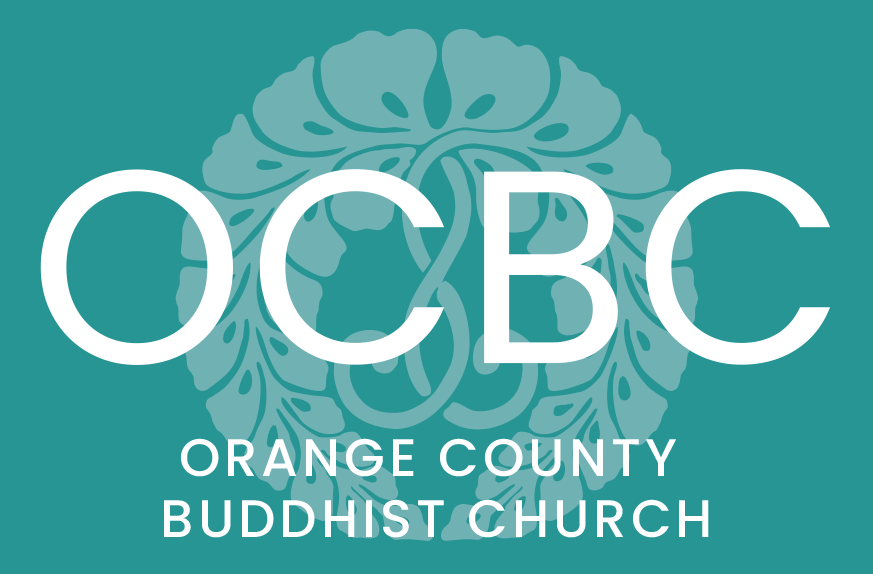Twenty Five Years in the Making
Image by Rev. Nori Watanabe
Sunday, May 16, 1999, was the first time my family and I attended a Sunday service at OCBC. To this day, my daughter still recalls that she thought we were going to Disneyland. Thus, this month is our 25-year anniversary at OCBC. The following is the first essay that I ever wrote for the Korin. It was completed on Tuesday, January 29, 2002 @ 10:13 PM. I wanted to take a moment to pause and acknowledge this moment as something very meaningful to both me and my family.
The Life and Thought of Shinran Shonin
Facing a deep spiritual crisis, Shinran Shonin was desperate. He knew of only two paths. One was self-purification and the other was death. Both held out no hope of awakening for him. The harder he tried to purify himself the more impurities he found within himself. He was heading in the wrong direction, but he did not know why. Shinran Shonin had to find another option. It was then that he met Honen Shonin.
Honen Shonin was a follower of the “Pure Land Way” (Jodo Shu). He taught that awakening is based on a path of understanding and not on a path of purification. It was so simple. The traditional religious paradigm had merely been reversed. Buddhism was not a religion of good works but a religion of insight. At that moment, Shinran Shonin realized that during his 20 years at Mt. Hiei he had been trying to acquire merit motivated by his own self-love. This was his moment of clarity. This was not only “the true essence of the Pure Land Way” (Jodo Shinshu) but also of Buddhism itself. Shinran Shonin realized that a practice based on self-love could never lead to selflessness.
His goal now was not to be extraordinary but to be extra ordinary. This flash of inspiration came to Shinran Shonin from somewhere beyond his calculating mind. He realized that the source of his problems was due to his self over estimation. The whole notion that his flawed self could purify itself was fundamentally flawed. He gave up trying to pull himself up by his own bootstraps. His awakening had to depend on something beyond the self.
Shinran Shonin now had peace of mind. He knew that his path was now rightly determined based on a power beyond the self. The Dharma was pulling him towards awakening rather than it being acquired through his own efforts. Now “Right View” was possible. Shinran Shonin could now look deeply within himself without being afraid of what he might find. When you can see yourself more clearly than you can see the world around you more clearly. The only statements one can make in Buddhism are those in the first-person singular form. A deep understanding of self is most important.
Shinran Shonin was now completely free. However, the fundamental truth that he experienced was beyond the limitations of words and concepts. The only way to express his experience was through the use of paradoxes. Paradoxes can lead to a deeper understanding as you roll them around and around in your mind over a long period of time. They are very much like a koan. The most famous of these paradoxes is the 18th vow of the Larger Sutra.
However, paradoxes can be very confusing if you do not know that they are paradoxes. Contributing to this confusion is the difference in the vocabulary and metaphors used by Shinran Shonin compared with those used by Shakyamuni. Although these differences can be easily explained away by recognizing the distance between these two teachers in terms of time, geography, and language, they can still be daunting to a newcomer.
Shinran Shonin also never intended to start a new school called Jodo Shinshu. In fact, he never saw himself as a teacher. He was merely a student trying to learn what made Buddha the Buddha. In a sense, Shinran Shonin rewrote Buddhist history. No longer did the Buddha create Buddhism; it was Buddhism that created the Buddha. Impermanence and the deep yearning in us to relate the finite to the infinite have existed since the beginningless beginning. This yearning is called Hongan, the desire to find meaning. This is the birthright of all beings. It comes for free. There is nothing to do.
This idea of “nothing to do” is sometimes referred to as “No Practice” but this does not mean that you do not have to do anything. This is because there are two kinds of practices. There is right practice and there is wrong practice. Right practice is the practice that is generated beyond the calculating mind due to understanding. This understanding comes from merely listening to the Dharma. When you walk in the rain you get wet. You do not need to worry about getting wet once you make the decision and effort to go out into the rain.
This realization occurs in the here and now. Once on the path, your destination is assured. This is the path of the Bodhisattva. This is Mahayana Buddhism. We are incapable of ridding ourselves of our ego, but a deep understanding of the Dharma helps loosen its hold. It is as if a very dark and cloudy day has been illuminated by the sunlight of the Dharma. The ominous, dark clouds never go away but over time they do break up a bit. With this sunlight we are no longer frightened of the clouds. They are just clouds. They are neither good nor bad. They just are. Our burdens are no longer a burden to us when seen in this light.
Namoamidabutsu, Rev Jon Turner

